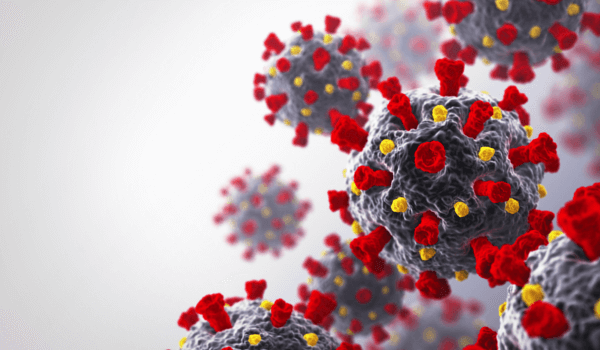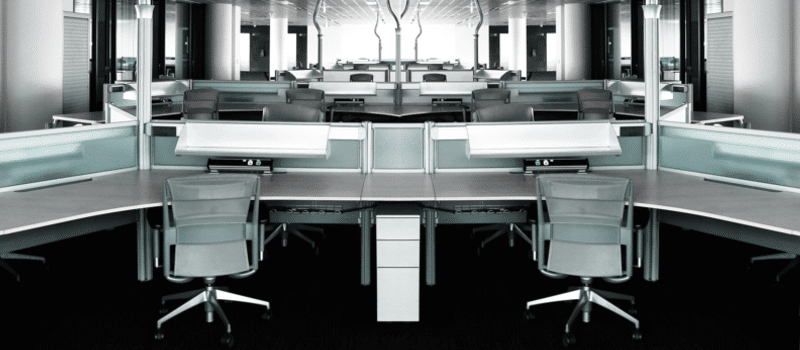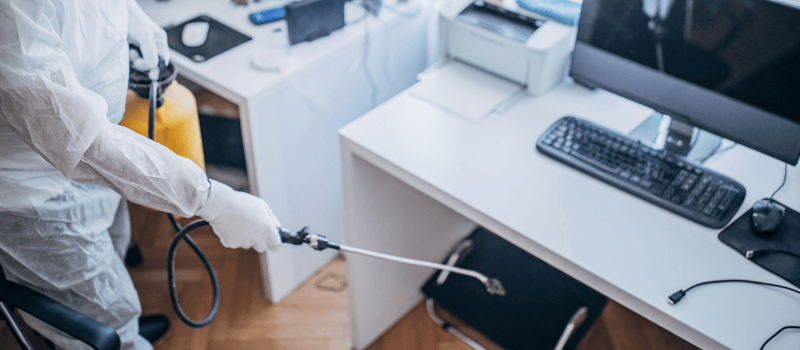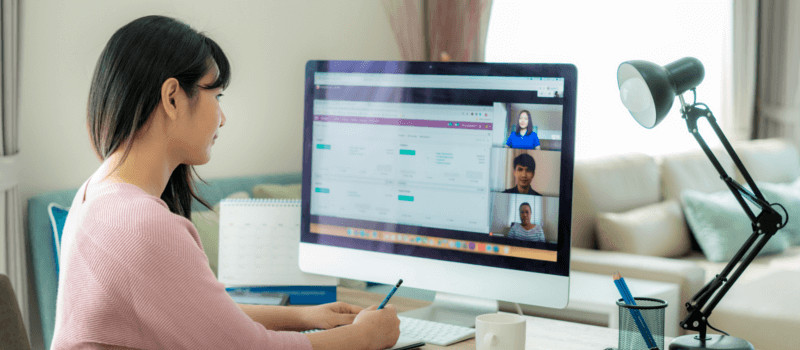After COVID-19: returning to the workplace in a post-coronavirus world


According to Bill Gates, COVID-19 has permanently altered the way we work. And while we’re all doing our best to work remotely right now, what happens when it’s time to return to the workplace?
Sure, that transition may still be months away. But organizations who prepare now will be in a better position to help their employees return to work safely in a post-coronavirus world—whenever that may be.
Here are six of the most pressing COVID-19 workplace strategies that we believe facilities teams should start thinking about to make the return to work as safe and positive as possible.
1. Creating COVID-19 workplace guidelines
There’s no getting around this one. Organizations will need to create “coronavirus guidelines” that are specific and applicable to their physical facilities, workplace culture, and workplace practices.
These guidelines won’t just help employees once they’re back at work. They’ll act as the foundation for every decision an organization makes about health- and legal-risk mitigation in the workplace.
To create COVID-19 guidelines that are specific and applicable to your organization, start by referencing the COVID-19 guidelines set by your local public health authority. Examples include:
- The Centers for Disease Control and Prevention
- The World Health Organization
- The European Center for Disease Prevention and Control
- Country-specific public health guidance
You might also benefit from referencing existing COVID-19 Workplace Guidelines before creating your own:
- WHO Guidelines: Getting Your Workplace Ready for COVID-19
- California State University Guidelines: Social Distancing in Offices, Reception Areas, and Other Work Settings
Make sure the guidelines you set are clear, easy to follow, and easy to access.
We’ve included additional examples of COVID-19 workplace guidelines and strategies that you might want to introduce further below in this guide.
2. Tiered returns to the office
Staggering the return of employees will result in fewer employees in the workplace at any given time which, in turn, should make it easier for everyone to maintain social distancing.
We also suspect that the first round of employees to return will “get the hang” of your workplace’s COVID-19 guidelines and set an example for any subsequent waves of returning employees.
Here are some questions to ask yourself as you plan a tiered-return to the workplace that works for your organization:
- Can you prioritize who returns first based on which teams need to be physically present to do their job?
- Can some of your employees sustain remote work without a significant impact to the company mission?
- Will seating assignments be different when employees return? How will you communicate this, so that employees can easily find their new desk?
- Do you have an online communication tool (e.g. Slack, Microsoft Teams) in place for employees to connect virtually?
- Who can employees reach out to with any COVID-19 related questions or concerns? (You could nominate a single person, or create a COVID-19 specific channel in Slack.)

3. Physical distancing in the workplace
Organizations will need signage and communication guidelines that encourage and enforce a six-foot (2 meter) physical distance between employees at all times.
Here are some of the strategies that facilities teams will need to consider to ensure physical distancing guidelines that complement their organization’s workplace culture and physical setup:
- Reconfiguring seating assignments so that work desks and common area seating are appropriately spaced out
- Reducing or limit available seating in large meeting rooms to ensure physical distancing can be practiced during group hangouts
- Helping employees conduct video-based team meetings by ensuring access to video conferencing software and dedicated meeting spaces
- Requiring a maximum of one employee per elevator
- Policies and signage that enforce social distancing in stairwells or tight spaces where employees may find it difficult to maintain a six-foot distance from one another

4. Seat people strategically
Before non-essential shutdowns became widespread, restaurants were the first to introduce “social distancing seating” by keeping every second table vacant on the restaurant floor. Some airlines were quick to follow, by eliminating middle seat availability on all flights.
Moving forward, employee seating in the workplace will need to adhere to physical distancing requirements.
Physically moving desks apart, making certain shared desks unavailable, and splitting teams and departments across several different areas of the facility are some of the strategies that will come into play.
A school or an office is ultimately only as germ-free as the people in it. A complete disinfection can buy temporary peace of mind, but it’s no substitute for routine, ongoing cleaning.
— The Atlantic, America’s Coronavirus Deep-Cleaning Boom

5. Increased cleaning and maintenance
Increased cleaning is everybody’s new normal. Global real estate firm Cushman and Wakeman has been using its concept, The 6-Feet Office, to help over 10,000 organizations in China move nearly one million people back to work.
And there’s growing speculation that hospital-grade cleaning practices, such as mandatory certifications for cleaning teams and electrostatic precipitation cleaning, may become the new standard for cleaning teams.
So how can facilities teams accommodate these new protocols in the workplace?
Improve indoor air quality to reduce COVID-19 exposure
WB Engineers and Consultants came up with a list of strategies for improving indoor air quality in the workplace that could reduce COVID-19 exposure. Here are some of the recommended short-term strategies that facilities teams are advised to consider:
- If possible, introduce Electrostatic Precipitation Cleaning, a hospital-grade cleaning process that sprays an electrostatically charged mist onto surfaces and objects that adheres to surfaces and objects
- Adjust dilution ventilation to increase the percentage of outdoor air being circulated inside the guilding (100% outdoor air is preferable)
- Prevent stagnant water by turning on faucets every 2-3 days
- Make any necessary adjustments to the HVAC system to ensure air quality is acceptable
To review these short-term and long-term guidelines in full, download a copy of Improving Indoor Air Quality to Reduce COVID-19 Exposure on the WB Engineers and Consultants website.
Given the seriousness of the situation, organizations should also arrange HVAC maintenance and cleaning to ensure air quality is acceptable and that equipment is maintained before employees return to the workplace.
Increase the frequency of workplace cleaning schedules
- Plan (and budget for) for an increased cleaning schedule in your office
- Before the return to work, check with your cleaning company to ensure they have the human and physical resources required to perform additional cleaning in your facilities (they may be busy or even unavailable due to heightened demand)
- Ensure that cleaning teams are paying extra attention to communal surfaces (doorknobs, elevator buttons, kitchen surfaces, fridge handles, etc) and adhering to the most up-to-date COVID-19 cleaning guidelines at all times
Ensure necessary supplies are readily available
- Increase the availability of cleaning supplies
- Introduce hand sanitizer in high-traffic areas (doorways, elevators, kitchen) so people can sterilize their hands after touching communal surfaces
- Communicate the whereabouts of cleaning and sanitizing supplies on your virtual floor plan
This pandemic is a real eye-opener for everyone about how important best practices in cleaning and disinfecting are in healthcare and beyond.
We need to train and certify cleaning professionals because this crisis is showing that frontline cleaning staff are essential. What they do matters and how they do it is important.
— Keith Sopha, Veteran Director of Environmental Services in Healthcare Settings, CTV News
Introduce Communication Guidelines on Cleaning and Hygiene
- Post signage throughout your facility that communicates when spaces were last cleaned, and when upcoming cleanings are scheduled
- Offer an abundance of hand sanitizer and antibacterial soap throughout the facility and communicating its whereabouts on your virtual floor plan
- Introduce policies that no one can touch equipment that belongs to other employees (desks, computers, chairs, phones, etc.)
- Put the onus on employees to maintain things like distance and increased handwashing
- Make sure it’s easy for employees to quickly submit facility requests and notify your facilities team when an area needs cleaning

6. Helping employees deal with change, safety, and uncertainty
Physical and cultural changes in the workplace can be difficult for employees at the best of times. And growing evidence suggests that the world may experience a mental health crisis in the wake of COVID-19.
How do we act as colleagues when physical proximity and handshakes are a thing of the past? What happens if somebody on the team gets sick? Is there anyone employees can turn to if their mental health or personal safety begins to suffer?
Companies will need to think hard about how they can support employees who are returning to the workplace after an unexpected (and, quite likely, challenging) remote-work period.
Here are a few ideas on how you can make the return to work a safe and positive experience for your people.
Actively help employees reduce the risk of transmission in the workplace
While the discussion may be uncomfortable for some, it’s important to brief employees on your organization’s expectations when it comes to reducing the spread of COVID-19 in the workplace.
According to current WHO guidelines, anyone should stay at home (or work from home) if they have even a mild cough or low-grade fever (37.3 C or more), or if they’ve had to take simple medications like paracetamol/acetaminophen, ibuprofen, or aspirin, which may mask symptoms of infection.
You may also want to:
- Regularly communicate the message that people need to stay at home even if they have just mild symptoms of COVID-19.
- Display posters with this message in your workplaces. Combine this with other communication channels commonly used in your organization or business.
- Check if your local occupational health services, local public health authority or other partners have developed campaign materials to promote this message, which you can print and distribute in your workplace.
- Advise employees that they will be able to count this time off as sick leave.
Facilitate “socially distant” socializing
Give your people ways to socialize while still complying with social-distancing guidelines.
- Create Slack channels dedicated to social activities and fun topics
- Use a Slack app like Donut to encourage virtual coffees and hangouts with employees
- Schedule virtual lunch and learn sessions
- Host virtual happy hours or online games
Actively encourage physical and mental wellbeing
Healthy employees are happy employees. Actively encourage holistic wellbeing in ways that are appropriate to your workspaces and your workforce.
- Schedule video sessions where your employees can follow along to an online workout, stretch session, or meditation. Yoga With Adriene and Yoga With Tim offer free yoga programs, and IGTV is full of qualified trainers offering free online workouts and movement sessions.
- Encourage the use of apps like Calm, Headspace, and Shine, which offer meditations and pointers that can reduce stress and anxiety.
Offer access to confidential online therapy via an online platform like TalkSpace.
How are you planning for the post-coronavirus workplace?
Managing the workplace in the wake of COVID-19 is new territory for us all. Comment below or send us a tweet to let us know how you’re planning for the return to work once non-essential shutdowns and social distancing are relaxed.
Subscribe to get all of our “Coronavirus and the Workplace” series delivered straight to your inbox.



